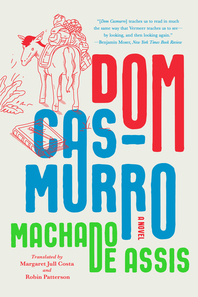
Description
A masterpiece of realism, Machado de Assis’s Dom Casmurro probes the mind of a distrustful husband with delusions of grandeur
Originally published in 1899, Dom Casmurro is widely considered to be Joaquim Maria Machado de Assis’s masterpiece and a progenitor of twentieth-century Latin American fiction. This exuberant new translation captures all the hilarious, maddening and utterly compelling idiosyncrasies of one of Machado’s most complex characters. Bento Santiago, our charismatic yet exceedingly unreliable narrator, nicknamed by his enemies Dom Casmurro, has become a bit of a recluse in old age. He spends his days reading and mourning the past in a house built as a replica of his childhood home. One day, musing over the painted busts of Nero, Augustus, Masinissa and Caesar, he is inspired to write his own story, a tale of equally epic proportions. Or so, at least, he thinks.
“Yes, let us begin by evoking a famous November afternoon, one I will never forget,” he writes, recalling the day he fell in love with his childhood sweetheart, Capitu. Thus he transports readers back to his youth in a once fashionable neighbourhood, when he and Capitu were neighbours playing innocently in the backyard. But after overcoming many obstacles, Bento’s happy-ever-after ending proves short-lived when he is consumed by paranoia and jealousy.
At once oblivious and obsessive, Bento becomes a strangely engaging antihero as he mines the repercussions of his suspicions against the backdrop of a rapidly modernising Rio de Janeiro. Eloquently translated by Margaret Jull Costa and Robin Patterson—the same duo that sparked a Machado renaissance with their brilliant translations of The Collected Stories and Posthumous Memoirs of Brás Cubas—and brimming with his signature charm, Dom Casmurro is a subversive and ground-breaking dark comedy from one of Brazil’s greatest authors.
Reviews
"More than perhaps any book I know, Dom Casmurro has to be read more than once. It teaches us to read in much the same way that Vermeer teaches us to see — by looking, and then looking again." — Benjamin Moser, The New York Times Book Review












